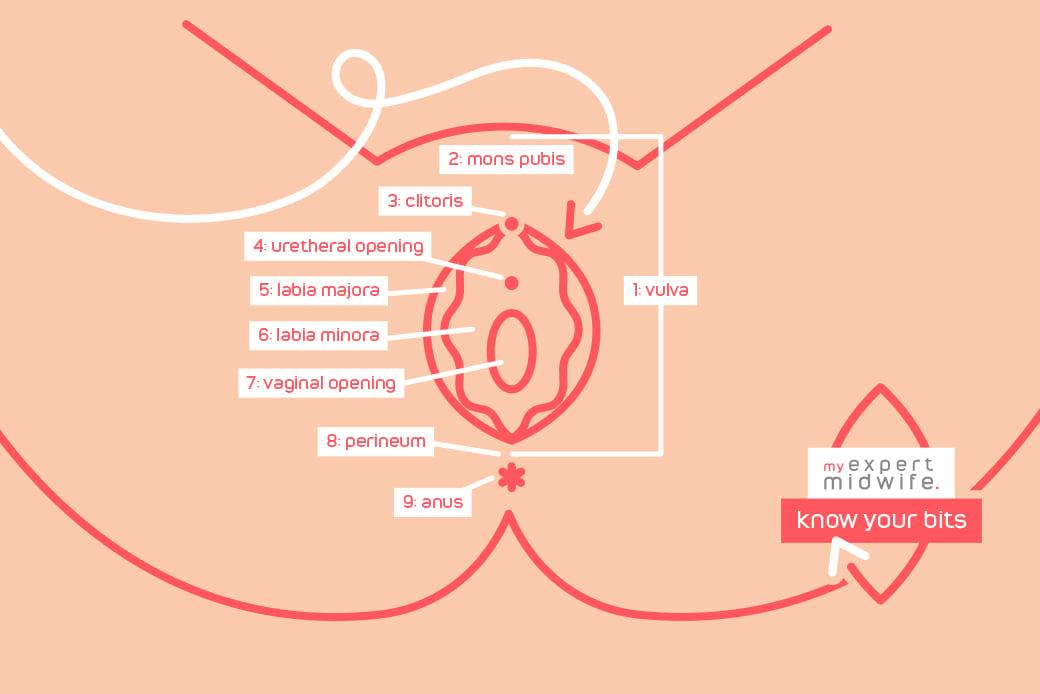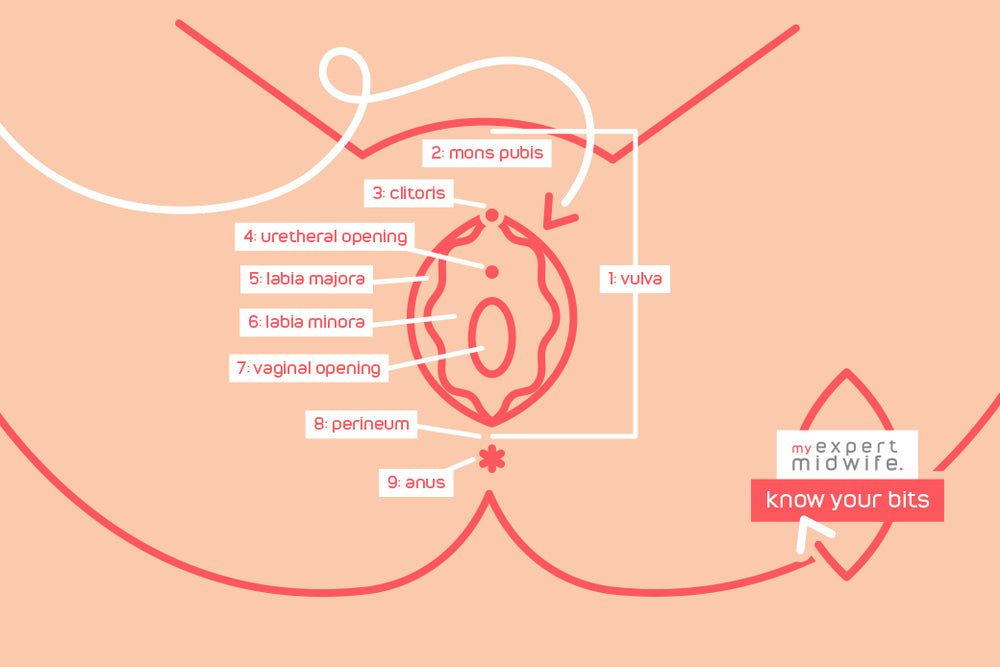My Expert Midwife thought it was about time to develop a much-needed information resource, dedicated to helping everyone to learn more about their bits, which bits are where, what bits do which jobs and generally to celebrate how amazing our bits are!
Here’s our guide to understanding all about your bits

1. Vulva
The vulva is the name for female genitals visible on the outside of the body. The vulva includes the labia majora and minora, clitoral hood and clitoris, opening to the vagina and the urethra. Vulvas are as personal and unique as faces, they have the same parts in similar places but will look different from each other, in both shape and colour. Their hair covering also varies, some having more than others, of different colours, lengths and textures.
2. Mons Pubis
The Mons Pubis is a rounded pad (or mound) of fatty tissue that covers your symphysis pubis, or ‘pubic bone’, at the front of your pelvis. It is covered by skin and pubic hair and provides protection to the thick cartilage that joins your pelvis together, also offering cushioning during sexual intercourse. It contains many touch receptors as well as glands that secrete pheromones, which are chemicals that induce arousal and attraction in a partner.
3. Clitoris
The clitoris is at the top of the vulva and is protected and covered by the clitoral hood, which is literally a hood of skin over it. It can vary in size from a small pea to the size of the tip of the nose. Although relatively small from the outside, the shaft and roots extend through the body much further and around the vulva and vaginal area. The clitoris, like the penis, has the ability to grow in size during sexual arousal and can create orgasms when stimulated.
4. Urethral opening
This is the opening between the clitoris and vagina from which you pass urine. It is connected to the urethra which is the tube that transports urine from the bladder and can be visualised as slightly smaller than the end of a drinking straw.
5 + 6. Labia Majora / Minora
The labia majora are the thicker lips surrounding the vaginal opening with pubic hair on and the labia minora are the thinner lips inside next to the vaginal opening. The labia provide protection for the more delicate parts of the vulva such as the vaginal opening, vagina and its mucous membranes, the urethral opening and the clitoris.
Some people have short labia minora and others longer labia which are more visible externally. It is common for one side to be longer than the other and for the colour to vary from dark brown to pale pink, especially with different skin tones. All these variations are completely normal.
7. Vaginal opening
The vaginal opening is just below the urethra. It is the entrance to the vagina which is a muscular tube with great abilities to stretch to accommodate the birth of a baby and then to be able to shrink back again. It is also where the menstrual/period blood and other secretions leave the body.
8. Perinuem
The perineum is between the vaginal opening and the anus. It is useful to understand that the perineum, which is part of the pelvic floor, is a thick muscle which needs to thin down to paper thin during crowning for the birth. Regular perineal massage helps these tissues to become softer and more elastic in preparation for birth, thus less likely to sustain a more severe tear.
9. Anus
The anus is the bum hole from which you poo from. Anus is derived from Latin and means circle or ring. It stays tightly closed due to the anal sphincter muscle until it is stimulated to open by needing to pass a bowel movement. It is very close in location to the vagina, separated only by the perineum.


















